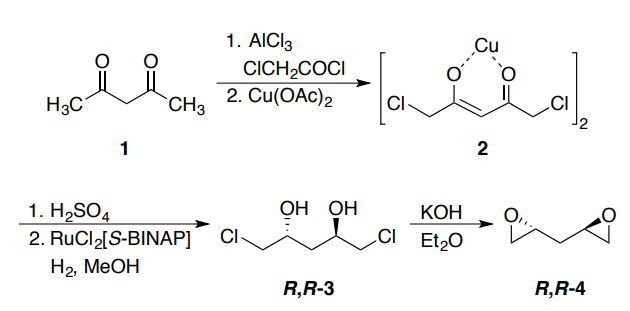The original procedure utilizes a reversible acyl transfer reaction of acetylacetone (1) using aluminum trichloride and chloroacetyl chloride. The reaction is driven forward through removal of acetyl chloride by distillation and the resulting dichlorodione is isolated (57–58% yield) as copper complex 2. The dione is then liberated from the metal under acidic conditions and subjected to Noyori asymmetric hydrogenation5–9 under high pressure to give dichlorodiol R,R-3 in 40% yield after recrystallization, which undergoes double cyclization under basic conditions to form bis-epoxide R,R-4 (92% yield; >97% ee).


